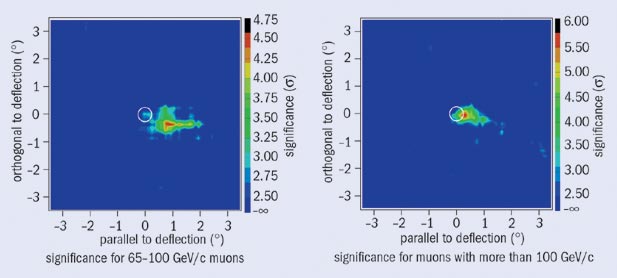
A dedicated cosmic-ray experiment making use of the muon identification system of CERN’s L3 experiment collected around 12 x 109 cosmic ray muons between April 1999 until L3 finished taking data in 2000. The goal of the so-called L3 plus cosmics (L3+C) experiment is to study the cosmic muon spectrum precisely over the range 20-2000 GeV/c, allowing for normalization of the calculated muon-neutrino spectrum. Other topics under analysis by the experiment include the search for point-source burst signals, exotic events and studies of the composition of very-high-energy primary cosmic rays around 1015 eV, made possible by coupling the L3+C apparatus to a surface scintillator array.
Also interesting is the ability of the apparatus to image the shadow of the Moon. High-energy muons indicate the direction of the primary cosmic-ray particle. Since the Moon can absorb primaries – usually protons – on their way to Earth, the L3+C apparatus saw fewer muons originating from that direction and so observed a shadow. Moreover, since the Earth’s magnetic field deviates the course of charged primaries, positive particles are shifted eastwards and the corresponding shadow is shifted to the west. The extent of the shift and the shape of the shadow depend on the momentum of the primary and the size and the direction of the field along its path.
Antiprotons, if any, would be deviated in the opposite direction, giving rise to an “anti-shadow”. No such feature is seen. Work is continuing to set a limit to the antiproton to proton ratio in an energy range around 1 TeV, well above the present range of direct measurements, which extend up to 50 GeV.





